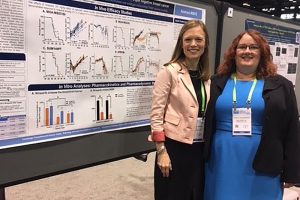
University of North Carolina Lineberger Comprehensive Cancer Center researchers are searching for better treatments for an aggressive breast cancer type — triple negative breast cancer — once it has spread to the brain.
Approximately half of patients with metastatic triple negative breast cancer have been found to have brain metastasis, and more treatments are needed for this group, said UNC Lineberger’s Carey Anders, MD, medical director of the UNC Breast Center and associate professor in the UNC School of Medicine Division of Hematology and Oncology. Anders helped to found a clinic dedicated to investigating treatment strategies for breast cancer brain metastasis.
“Brain metastases usually arises in around half of our patients with metastatic triple negative breast cancer, and that is a large proportion of the patients we are treating,” Anders said. “Right now, we aren’t treating them very differently with and without brain metastases because our toolkit is relatively shallow. These types of studies with brain permeable drugs could make a substantial impact on how we could treat patients with triple negative disease and brain metastases in the future.”
Anders and Amanda Van Swearingen, PhD, senior research specialist at UNC Lineberger, presented preclinical findings at the American Association for Cancer Research Annual Meeting 2018 about a potential promising strategy for triple negative breast cancer brain metastases. They studied the PARP inhibitor, niraparib, in three models of triple negative breast cancer with alteration and loss-of-function changes in the BRCA1 gene.
They found that niraparib crosses the blood brain barrier and accumulates in brain tumor tissue in laboratory models. In addition, a model of breast cancer with a mutation in the BRCA1 gene and of a claudin-low subtype grown in the brain was very responsive to the treatment, which resulted in inhibition of tumor growth.
“Other clinically available drugs do not penetrate the blood brain barrier to reach brain tumors, but we saw pretty promising responses in our laboratory models in terms of the compound reaching the brain in amounts sufficient to exert an effect, which is large issue in treatment of brain tumors,” Van Swearingen said.
In addition to Anders and Van Swearingen, other UNC Lineberger authors included Maria J. Sambade, Charlene Santos, Marni B. Siegel, Kaiming Sun, Jing Wang, and Keith Mikule.
The study was supported by Tesaro Inc. and an ASCO ACRA grant award.
